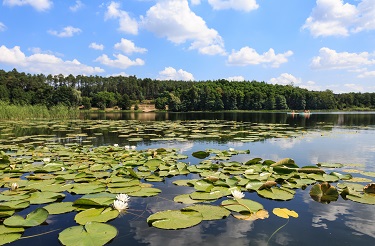Freshwater biodiversity – the big picture

Related topics
Agriculture & Forestry Environment & climate action Innovation Societal Challenges Austria Belgium France Germany Slovenia Spain United Kingdom Switzerland Environment Climate action, environment, resource efficiency and raw materials Malaysia Philippinesdate: 25/03/2015
Project: Biodiversity of freshwater ecosystems: S...
acronym: BIOFRESH
See also: CORDIS
Rivers, lakes and other freshwater habitats cover just 1% of the Earth’s surface but are home to 30% of all vertebrate species and 40% of all fish. Yet freshwater species are declining much faster than those that live in the sea or on the land. What do we know about the biodiversity of our freshwater habitats and the threats they face?
Not enough, is the answer. The EU-funded BioFresh project was the first major attempt to map freshwater diversity worldwide. Over a period of more than four years, the consortium of 18 partners gathered information from numerous earlier studies to quantify patterns and trends in freshwater biodiversity and to raise awareness about the diversity of our rivers, lakes and wetlands.
“The goal was not so much to collect all available data but to establish a rigorous quality check for the data that we compiled,” says project coordinator Klement Tockner of the Leibniz Institute of Freshwater Ecology and Inland Fisheries in Berlin. “The Freshwater Information Platform established during BioFresh is now used as the reference system for freshwater biodiversity research.”
Key biodiversity areas
One of the most important products accessible through the platform is the interactive Global Freshwater Biodiversity Atlas, which maps the distributions of over 13 000 species in 819 river basins covering nearly 80% of the Earth’s land surface. The associated portal contains searchable databases with almost nine million records of more than 47 000 species.
One surprise is that the European ‘key biodiversity areas’ for freshwater species identified by the project are generally not among those already protected in law. This is partly because priority has been given to terrestrial habits, especially where there are rare species, but also because many protected areas result from a compromise between conservation and the pressure for economic development.
The BioFresh team believes that the project data will be invaluable for a more systematic approach to the conservation and restoration of freshwater habitats. “For example, we established a database of all major hydropower dams that are under construction or planned,” Tockner says. “These data may help in quantifying the ecological, social and economic consequences of these dams and support decision-making on where to build dams, how to build them and how to operate them.”
Census of freshwater life
Although BioFresh finished in April 2014 the work is continuing. “Selected partners involved in the project are using their institutional resources to maintain and further develop the Freshwater Information Platform, including the data portal and atlas,” Tockner says.
“We are convinced that the project will serve as a nucleus for further research and management activities. A key vision is to establish and carry out a ‘Census of Freshwater Life’ in order to map and quantify the unique diversity in freshwaters and to better understand the role of this diversity for the benefit of humans and nature alike.”
There is a lot of work still to be done, not least to promote a more open culture of data publishing. The team found reluctance among some publicly-funded researchers to contribute their data, possibly through fear of the quality checks required for the BioFresh data portal. “This will be a key challenge in the near future both for funding agencies as well as journal publishers.”
Even now, BioFresh has been only a first step towards a full understanding of freshwater biodiversity. Research still tends to focus on the presence or absence of species rather than the diversity of the whole ecosystem. “This is a major gap,” Tockner notes. “In the end we are not managing species, we are managing ecosystems.”
Watch two project videos
